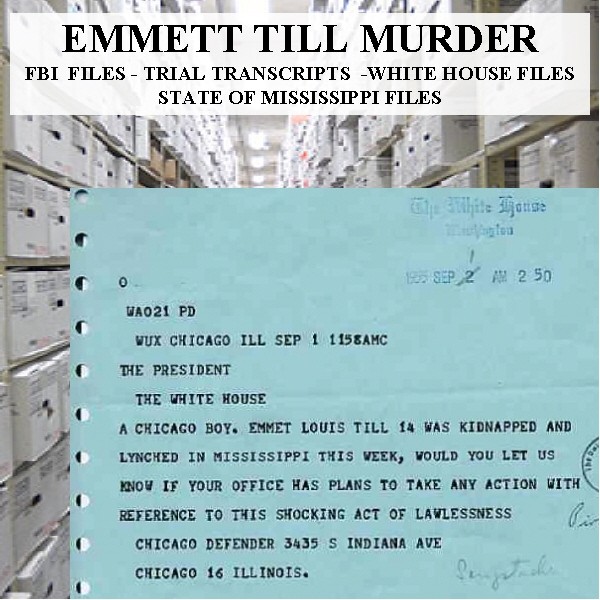
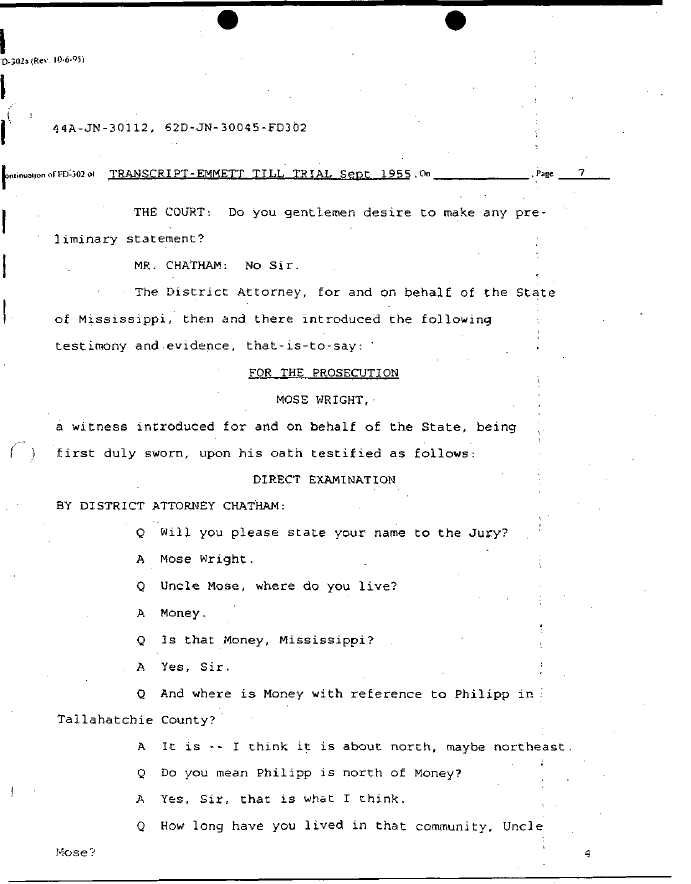
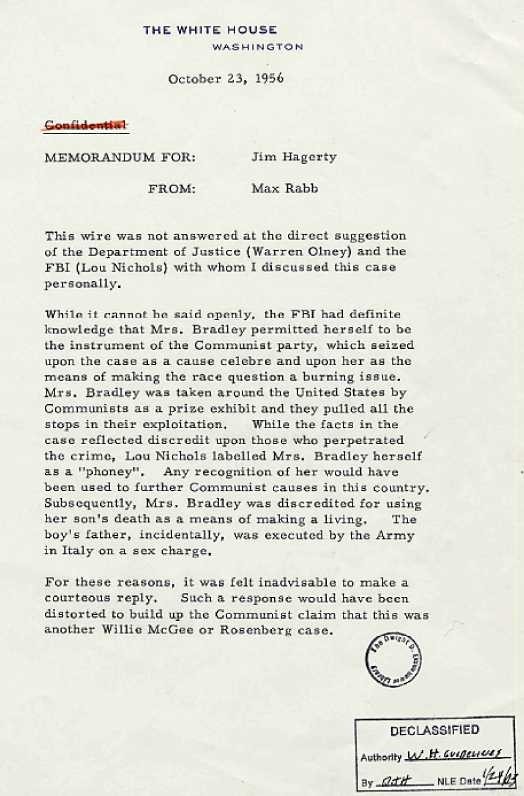
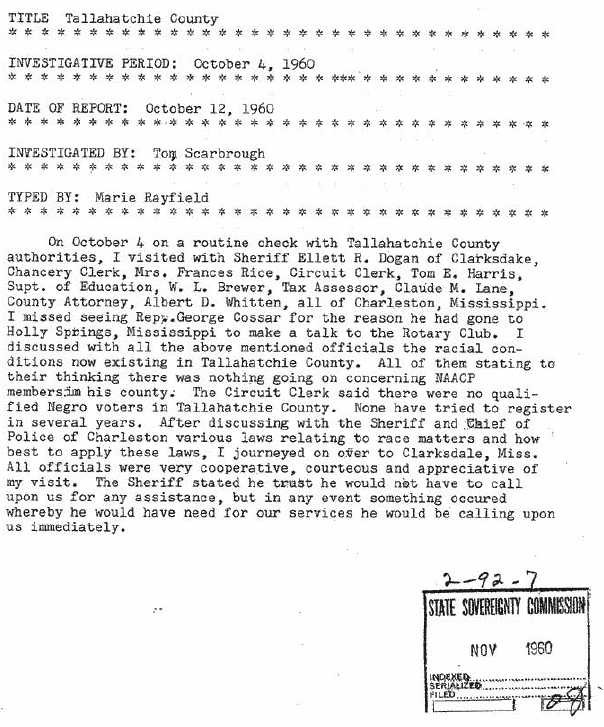
Emmett Till Murder: FBI, White House, Mississippi Files & News Articles
$19.50
Description
The Murder of Emmett Till: Timeline and Key Figures
Timeline of Events:
- July 25, 1941: Emmett Louis Till is born in Chicago, Illinois, to Mamie and Louis Till.
- August 24, 1955: Emmett Till enters Bryant Grocery & Meat Market in Money, Mississippi. Carolyn Bryant exits the store after him, and Till whistles.
- August 28, 1955 (approximately 2:30 a.m.): Roy Bryant and J.W. Milam, along with at least one other person, abduct Emmett Till from his great uncle Moses Wright’s house.
- August 28, 1955: Bryant and Milam brutally beat Emmett Till, take him to the Tallahatchie River, shoot him in the head, attach a cotton gin fan to his neck with barbed wire, and throw his body into the river.
- August 31, 1955: Emmett Till’s body is found in the Tallahatchie River, weighted down by a cotton gin fan.
- September 1955: Mamie Till makes the decision to have an open casket funeral for Emmett in Chicago. Tens of thousands view the body over four days. Photographs of Emmett’s body are published in Jet Magazine and the Chicago Defender.
- September 1955: The trial of J.W. Milam and Roy Bryant begins in Mississippi. The jury is all-male and all-white. Moses Wright testifies against the defendants.
- September 1955: J.W. Milam and Roy Bryant are acquitted of Emmett Till’s murder.
- 1956: William Bradford Huie publishes an article in Look magazine featuring the confession of J.W. Milam and Roy Bryant to the murder of Emmett Till. The NAACP excerpts files related to this confession. The State of Mississippi creates the State Sovereignty Commission to monitor civil rights activities.
- 1958 – 1972: The Mississippi State Sovereignty Commission operates, monitoring civil rights activities.
- 1963: Hugh Stephen Whitaker completes his master’s thesis, “A Case Study in Southern Justice: The Emmett Till Case.”
- 1977: The Mississippi State Sovereignty Commission officially closes.
- 1981: J.W. Milam dies.
- 1994: Roy Bryant dies.
- 1998: Mississippi is ordered to release the State Sovereignty Commission’s documents.
- January 6, 2003: Mamie Till-Mobley dies.
- May 7, 2004: The FBI reopens the Emmett Till murder case at the request of the District Attorney in Greenwood, Mississippi.
- 2005: The FBI recovers and transcribes a copy of the 1955 Emmett Till murder trial transcript.
- 2006: The U.S. Department of Justice determines that no federal jurisdiction exists because the statute of limitations has run out on any potential federal crime applicable to the murder of Emmett Till. The results of the FBI investigation are given to Leflore County District Attorney Joyce Chiles.
- February 22, 2007: A Leflore County grand jury declines to indict anyone for any criminal charge related to the homicide.
- 2008: Carolyn Bryant Donham admits to Timothy Tyson that she lied on the witness stand during the 1955 murder trial.
- Present: The Tallahatchie County Courthouse, a key site in the Till case, is added to the National Register of Historical Places.
Cast of Characters:
- Emmett Louis Till (1941-1955): A 14-year-old African-American boy from Chicago who was kidnapped and murdered in Mississippi after allegedly whistling at Carolyn Bryant.
- Mamie Till-Mobley (1921-2003): Emmett Till’s mother, who famously insisted on an open casket funeral to show the world the brutality of her son’s murder. She became a civil rights activist.
- Roy Bryant (1931-1994): Owner of Bryant Grocery & Meat Market and one of Emmett Till’s murderers. He was acquitted in 1955 but later confessed to the crime.
- J.W. Milam (1919-1981): Roy Bryant’s half-brother and the other man directly involved in Emmett Till’s murder. He was also acquitted in 1955 but later confessed.
- Carolyn Bryant Donham (c. 1934-2023): The white woman at whom Emmett Till allegedly whistled. Her testimony in the trial was a key factor in the acquittal of Bryant and Milam. She later recanted part of her testimony.
- Moses Wright (1895 – 1976): Emmett Till’s great uncle. He bravely testified against Bryant and Milam in court, identifying them as the men who took Emmett.
- William Bradford Huie (1910 – 1986): The journalist who paid Bryant and Milam for their confession to the murder of Emmett Till, which was published in Look magazine.
- H.C. Strider: Sheriff during the trial.
- J. W. Kellum: Defense attorney.
- J. J. Breland: Defense attorney.
- John W. Whitten: Defense attorney.
- Steve Whitaker: Researcher whose copy of the Till Murder trial was lost after his basement flooded.
- John Ed Cothran: Deputy in Leflore County to Sheriff George Smith who arrested J. W. Milam.
- Harry H. Dogan: Tallahatchie County’s sheriff-elect at the time of the Till murder trial.
- Curtis M. Swango: The presiding judge at trial of Milam-Bryant for the murder of Emmett Till.
- Timothy B. Tyson: Historian and author who interviewed Carolyn Bryant Donham in 2008 and revealed that she admitted to lying during the trial.
- Leslie F. Milam: Relative of J.W. Milam and Roy Bryant.
Emmett Till Murder FBI – White House – State of Mississippi Files, Newspaper Articles and Histories
This document consists of 2,270 pages containing files from the FBI, the White House, and the State of Mississippi Sovereignty Commission, alongside newspaper articles and historical accounts concerning the murder of Emmett Till (1941-1955).
Emmett Louis Till was born on July 25, 1941, at Cook County Hospital in Chicago, Illinois, to parents Mamie and Louis Till. In 1955, Till went to Money, Mississippi, to spend the summer with his great uncle, Moses Wright, and other family members. On August 24, 1955, 14-year-old Emmett entered the Bryant Grocery & Meat Market in Money, Mississippi. After leaving the store, Carolyn Bryant, the store owner’s white wife, followed him out, and when she did, Till whistled. His relatives knew that a whistle from a black male could lead to danger, so they quickly left the area with Till.
Around 2:30 a.m. on August 28, 1955, Roy Bryant, the store owner, along with his half-brother J.W. Milam and at least one other accomplice, arrived at Till’s great uncle’s home searching for the boy who had “done the talking” in Money and abducted him from the house. They violently assaulted Mamie Till, Emmett’s mother, made the remarkable choice to keep her son’s casket open at his funeral in Chicago so that people could witness the horrific J.W. Milam and Roy Bryant were found not guilty of Emmett Till’s murder, and Bryant celebrated this outcome with his wife in front of the media outside the courthouse. Milam and Bryant openly admitted to torturing and killing Emmett Till, with Milam making a recorded confession to Look Magazine for $4,000. Many historians view Emmett Till’s murder as a pivotal moment that ignited the civil rights movement in the mid-1950s. One hundred days later, Rosa Parks refused to surrender her bus seat to a white passenger, marking the beginning of the modern civil rights movement. Parks later mentioned that she was thinking of Till during that moment.
No further charges were brought against Bryant, Milam, or anyone else related to Till’s abduction and murder. Roy Bryant passed away in 1994, while J.W. Milam died in 1981. Mamie Till, who died on January 6, 2003, returned to Chicago, taught, and continued to speak about her son Emmett’s murder, advocating for a comprehensive federal investigation.
The FBI initiated its investigation on May 7, 2004, following a request from the District Attorney in Greenwood, Mississippi, to explore whether other individuals were involved in the case.
In 2004, the U.S. Department of Justice announced it would reopen the case to assess if anyone besides Milam and Bryant had any involvement. After the FBI’s investigation wrapped up in 2006, the Department of Justice concluded that there was no federal jurisdiction since the statute of limitations had expired for any possible federal offense linked to Emmett Till’s murder. The findings from the FBI investigation were provided to Leflore County District Attorney Joyce Chiles in 2006. On February 22, 2007, Chiles presented the evidence to a grand jury in Laflore County. The grand jury chose not to indict anyone on any charges connected to the homicide.
In 2017, historian Timothy B. Tyson disclosed that in a 2008 interview with Carolyn Bryant Donham, she confessed to having lied while testifying during the 1955 murder trial. Tyson reported that Bryant acknowledged her claims of Till making verbal and physical advances were untrue.
The collection includes:
WHITE HOUSE FILES
A total of 134 pages of files from the Eisenhower Administration related to Emmett Till’s death. Some of this material remained classified until 2005. Among the documents is a telegram dated September 1, 1955, sent by Mamie Bradley, Emmett Till’s mother, to President Eisenhower. There are also communications between White House officials and the Chicago Defender, along with correspondence from FBI director J. Edgar Hoover, which includes the reports “The Communist Party and the Negro” as well as Hoover’s presentation titled “Racial Tension and Civil Rights.” The files reveal that the Justice Department and FBI were primarily concerned about the possibility of the Till case being exploited by communists.
AFRICAN-AMERICAN NEWSPAPER COVERAGE OF THE EMMETT TILL MURDER
This section contains 378 pages of articles from African-American newspapers reporting on the Emmett Till murder. The newspapers featured include:
Afro-American Atlanta Daily World Birmingham World The Call – Kansas City Chicago Defender Cleveland Call and Post Jackson Advocate Louisville Defender Michigan Chronicle Saint Louis Argus
FBI INVESTIGATIVE REPORT
There is a 110-page summary prosecutive report from the FBI, dated February 9, 2006, detailing the investigation into Emmett Till’s murder, which began on May 7, 2004. The names of the individuals who have passed away are not concealed. The identities of two primary individuals are hidden. These are likely the two individuals involved in the kidnapping and murder who were still living when the report was published, Carolyn Holloway Bryant and Henry Lee Loggins.
Topics covered in the report include:
Description of the Crime.
Geographic/Social Areas of Interest: Leflore County, Sunflower County, Tallahatchie County, Socioeconomic Conditions in the Delta.
Segregation and Contributing Events: Segregation in the Mississippi Delta, Negro Law, Brown v. Board of Education, Citizens’ Councils, Other Important Events from 1955, the Location of Events.
Individuals Involved: Emmett Louis Till, The Wright Family, The Crawford Family, The Walker Family, The Milam/Bryant Family, Roy Bryant, John William Milam, Leslie F. Milam, Melvin L. Campbell, Elmer O. Kimbrell, Hubert Clark, Levi Collins, Johnny B. Washington, Otha Johnson Jr., Mary “Amanda” “Amandy” Bradley.
Important Locations: Bryant’s Grocery & Meat Market, Grover C. Frederick’s Farm, Glendora, Mississippi, Clint Shurden Plantation.
Investigation of the Crime: Timeline, Order of Events, Movement and Identification of the Body, State of Mississippi vs. Roy Bryant and J.W. Milam.
Confessions: Look Magazine, J.W. Milam’s Confession, Roy Bryant’s Confession, Leslie F. Milam’s Deathbed Confession, Leslie F. Milam’s Statements to a Confidential Source, Admissions by Carolyn Holloway Bryant, Lamareus Pilate.
Exhumation and Autopsy of Remains: CT Scan, Forensic Dental Analysis, Evidence of Injury, Mitochondrial DNA Testing, Anthropological Analysis, Lab Results, Ammunition Information, Processing of Evidence, Anatomical Diagnosis, Medical Examiner’s Conclusion.
EMMETT TILL MURDER TRIAL TRANSCRIPT
This is a 354-page transcription from the FBI of the Emmett Till murder trial in 2005. It was believed that all copies of the transcripts from the 1955 trial of J.W. Milam and Roy Bryant FBI FILE EXTRACTS
This section includes six pages of excerpts from FBI files related to the Emmett Till murder case. One memo reveals the inaccurate initial information the FBI had regarding Till’s kidnapping. Another memo outlines the FBI’s choice not to get involved in the case. A third memo discusses Carolyn Bryant’s testimony during the trial.
A CASE STUDY IN SOUTHERN JUSTICE: THE EMMETT TILL CASE
Hugh Stephen Whitaker’s thesis, titled “A Case Study in Southern Justice: The Emmett Till Case,” completed at Florida State University in 1963, serves as a key analysis of the Emmett Till murder and subsequent trial. His comprehensive, 218-page work incorporated interviews with jurors, law enforcement officials, attorneys, and others associated with the Till trial, including Sheriff H.C. Strider and defense lawyers J.W. Kellum, J.J. Breland, and John W. Whitten. This research illustrates how the jury’s decision seemed predetermined. Interviewees indicated that two African American men were deliberately concealed in a local jail in Charleston, Mississippi, to weaken the prosecution’s argument. The study thoroughly examines the various social, economic, political, historical, and racial factors that shaped Mississippi in 1955.
TALLAHATCHIE CIVIL RIGHTS DRIVING TOUR
This contemporary guide, spanning 15 pages, has been created by Tallahatchie County to highlight locations linked to the Till case, providing concise historical context for each site.
NAACP COLLECTION EXCERPTS
This section features 11 pages of documents from the NAACP Collection housed at the Library of Congress, primarily focusing on an interview conducted by Look Magazine, in which Roy Bryant and J.W. Milam admit to the murder of Emmett Till.
MISSISSIPPI STATE SOVEREIGNTY COMMISSION The files from the Mississippi State Sovereignty Commission span 768 pages and cover the years 1958 to 1972. They offer a detailed perspective on race relations, politics, and law enforcement in Mississippi. The Commission served as the state’s official agency against civil rights from 1956 to 1977 The files reference several individuals, including John Ed Cothran, a deputy in Leflore County under Sheriff George Smith. Cothran arrested J. W. Milam on allegations of kidnapping Emmett Till and served as a prosecution witness during the Milam-Bryant murder trial. Harry H. Dogan, who was elected sheriff of Tallahatchie County at the time of the Till murder trial, is believed to have assisted in juror selection for that trial. William Bradford Huie, a journalist, paid J. W. Milam and Roy Bryant $3,500 to share their story following their acquittal. Their confession was published by Huie in Look magazine in 1956. Curtis M. Swango was the judge presiding over the Milam-Bryant trial for Emmett Till’s murder.
The majority of the documents discuss the actions of the Mississippi Sovereignty Commission within key areas related to the Emmett Till murder case, specifically the counties of Leflore, Sunflower, and Tallahatchie in Mississippi. Till was abducted in Leflore County, forcibly taken to Sunflower County, his body was found at the border of Tallahatchie and Leflore Counties, and the trial of Milam and Bryant took place in Tallahatchie County.
The United States Department of the Interior National Park Service maintains a file concerning the addition of the Tallahatchie County Courthouse to the National Register of Historical Places, which includes historical information about the Till case. The Tallahatchie County Second District Courthouse is recognized as the most preserved site in Mississippi connected to the Emmett Till murder and trial.
The Mississippi Department of Archives and History has a file detailing the historical significance of the Tallahatchie County Courthouse. This file contains letters, newspaper articles, photographs, and data pertaining to the courthouse’s restoration efforts.
Related products
-
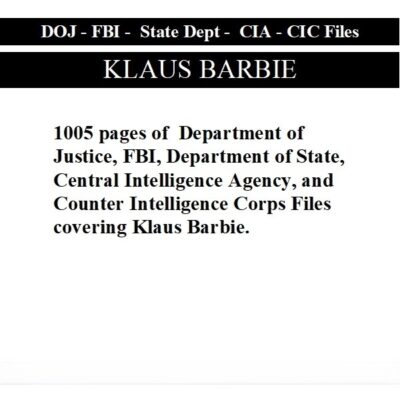
Klaus Barbie: Department of Justice – FBI – Counter Intelligence Corps Files
$19.50 Add to Cart -
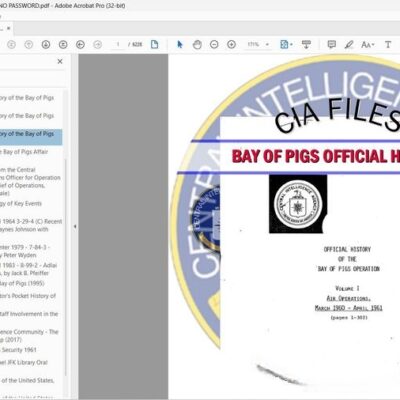
Bay of Pigs CIA Official History of the Bay of Pigs Operation
$19.50 Add to Cart -
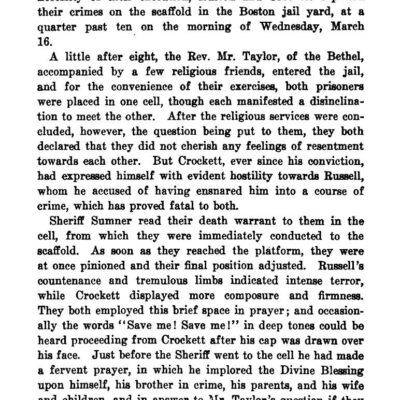
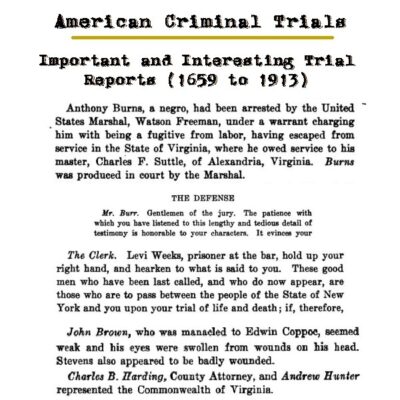
American Criminal Trials Reports (1659 to 1913)
$19.50 Add to Cart -
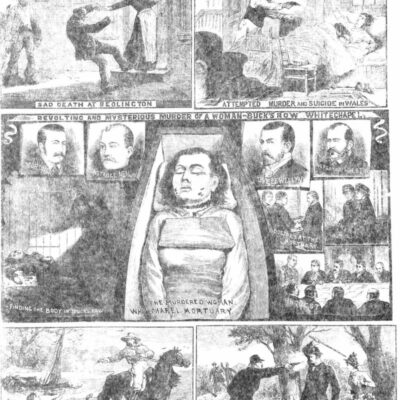
Jack the Ripper – Whitechapel Murders: London’s Illustrated Police News 1888-1899
$19.50 Add to Cart